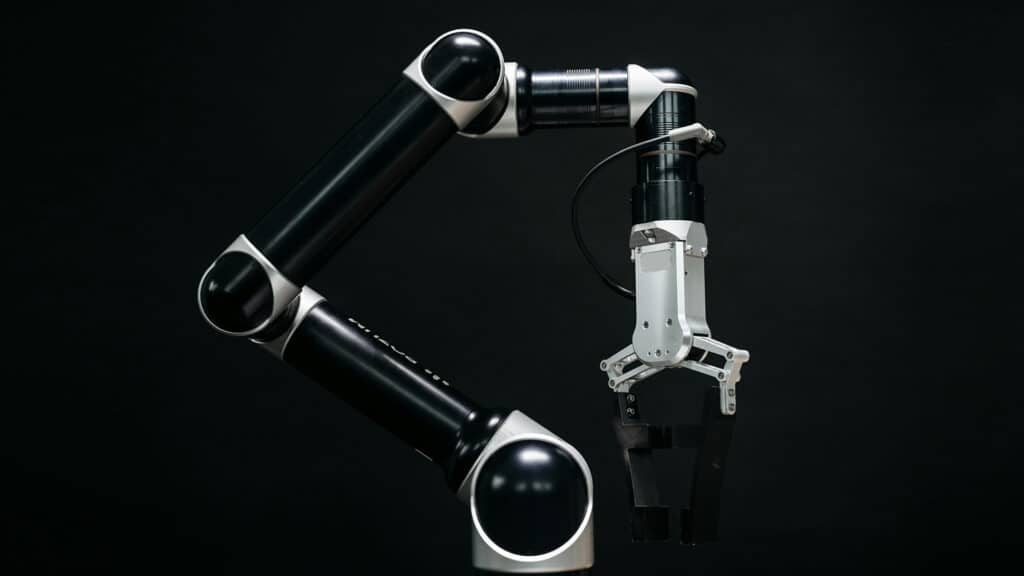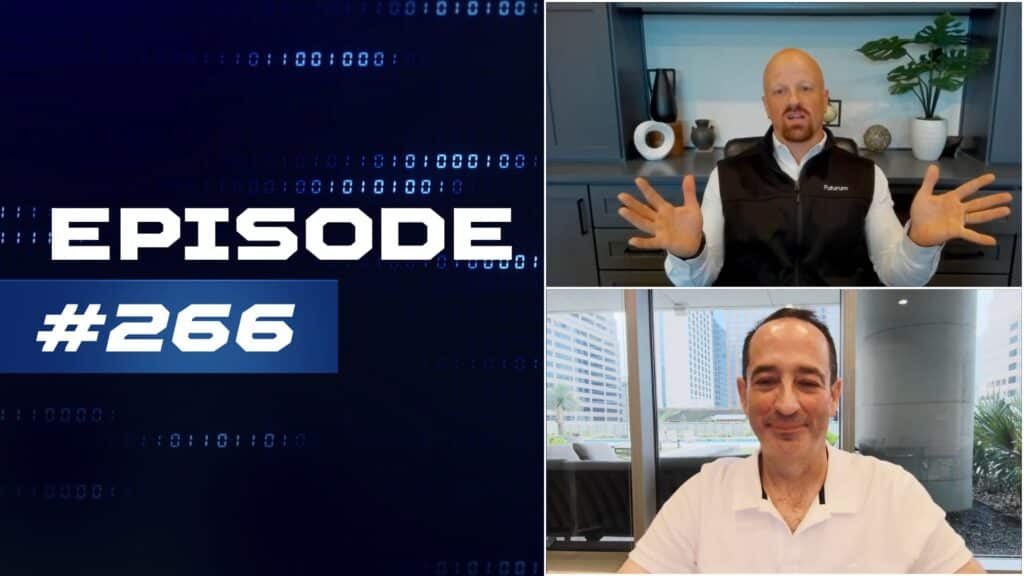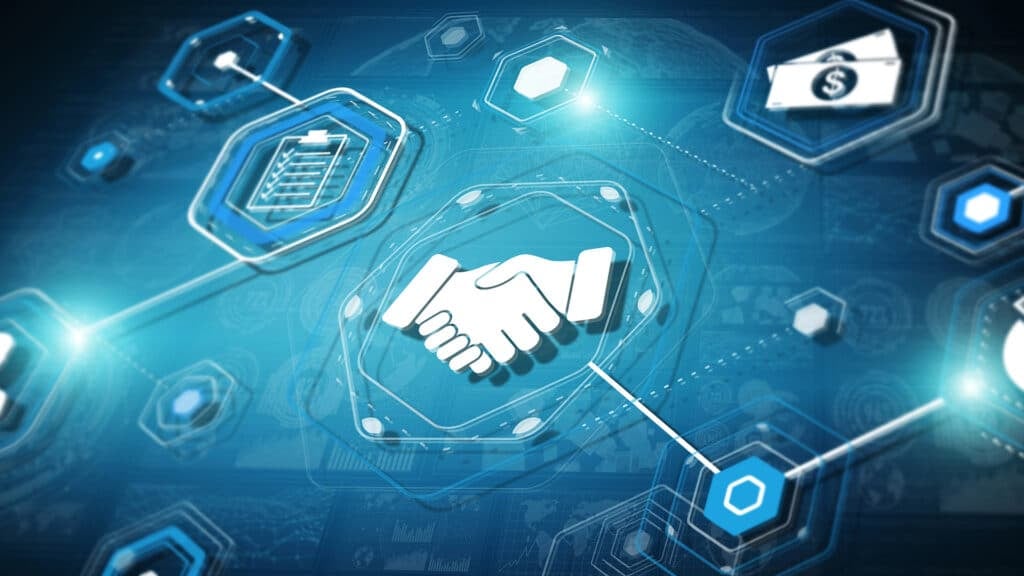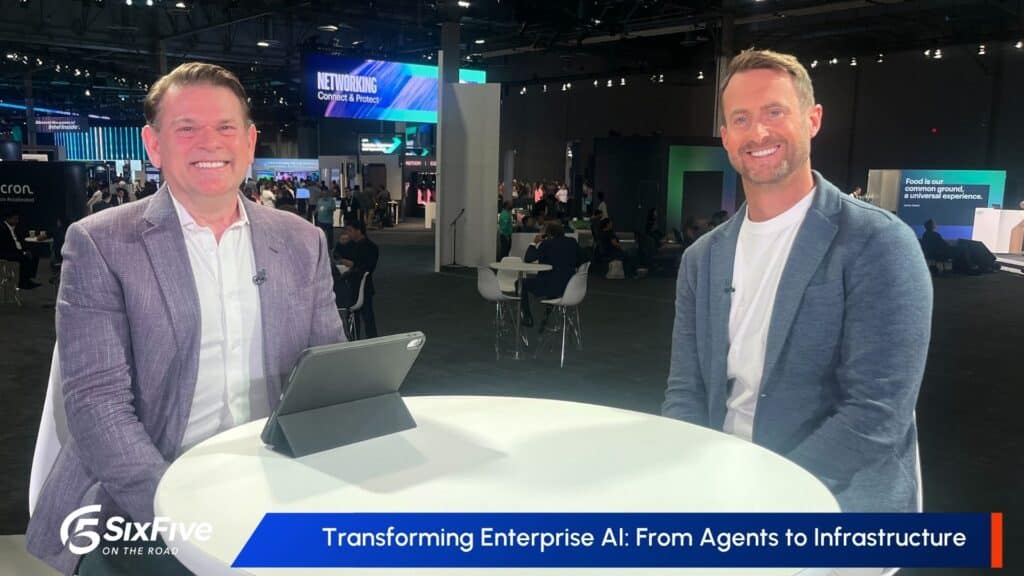On this episode of Marketing Art and Science, host and CMO Advisor Lisa Martin is joined by SingleStore CMO Madhukar Kumar. Tune into this 30 min discussion, as they explore the symbiotic value of a product-led growth (PLG) strategy on sales and marketing, the dynamic blend of creativity and analytics in marketing at SingleStore, and the influence of AI and emerging technologies on the customer experience.
Their discussion covers:
- Madhukar Kumar’s career journey, transitioning from a journalist to a developer to a tech CMO.
- PLG strategies that tightly align sales and marketing and facilitate conversion of customers from freemium to enterprise models.
- The evolving landscape of MarTech and its impact on modern marketing strategies, including the integration of creativity and analytics.
- Insights into the use of AI, gen AI, and emerging technologies in marketing and their influence on the customer experience and key performance metrics.
Watch the video below, and be sure to subscribe to our YouTube channel, so you never miss an episode.
Listen to the audio here:
Or grab the audio on your streaming platform of choice here:
Disclosure: The Futurum Group is a research and advisory firm that engages or has engaged in research, analysis, and advisory services with many technology companies, including those mentioned in this webcast. The author does not hold any equity positions with any company mentioned in this webcast.
Analysis and opinions expressed herein are specific to the analyst individually and data and other information that might have been provided for validation, not those of The Futurum Group as a whole.
Transcript:
Lisa Martin: Hi, everyone. Good to see you, happy to have you here with us. Lisa Martin here, CMO advisor and host of Marketing: Art & Science, one of Six Five Media’s newest webcasts and podcasts where we really talk with CMOs and marketing experts about the intersection, the fusion if you will, of marketing, art and science that really today defines modern marketing. I’m pleased to introduce my guest on today’s episode, Madhukar Kumar, the current CMO of SingleStore, but he’s also an author, a speaker, he’s a developer turned growth marketer. Madhukar, it’s so great, thank you for joining me on the program.
Madhukar Kumar: Thank you, Lisa. It’s so good to be here.
Lisa Martin: Great to have you. And I want to share a little bit more of your background with the audience, because it’s really interesting. You’re not only a marketing and product executive with a really strong technical background of many years, more than 15, of experience leading global product marketing teams, but you also really have great expertise in building go-to-market strategies, GTM strategies with product-led growth principles for developer audiences. You’ve also been really successful with building and growing revenue pipelines in really fast-moving startups and multi-billion dollar Fortune 100 companies. Would love for you to start off telling the audience a little bit about your journey to the CMO, because from what you told me the other day, you were a journalist in India who got into computers and it kind of all came from there. Give us that backstory.
Madhukar Kumar: Yeah, absolutely. And again, thank you for having me on this episode. I started off my career, as I was telling you the other day, as a journalist. I was a city reporter for the newspaper Hindustan Times back in ’97 to ’99. And at that time, the whole worldwide web was really coming along, so I managed to self-teach myself how to create websites or make websites. So a couple of folks were sitting there and we learned how to take the entire newspaper edition and turn it into webpages. That kind of got me into the whole technology side.
So then I came to the U.S. to do my master’s in mass comm, ended up also teaching web design, and doing my master’s in software engineering. So that got me into the whole developer engineering career all the way from being a journalist, but I thought that the medium was different, but the storytelling was still the same. You start with an idea and then you paint that canvas, so to speak. So I love the name of this show, Marketing Science, because that’s exactly where we were or my head space was at that time.
So from then as an engineer, I got to the Bay Area, the Silicon Valley, and over the years somebody said, “Hey, it looks like you could do product management.” So I ended up being in product management, ended up running product strategy. And as a rite of passage, everybody goes through Oracle. I ran product strategy at Oracle for customer experience products. Then I got closer and closer to the developer audience because I still liked to write code, I still liked to build applications, I still liked to write articles, as well.
So then at some point when I was a VP of product management, one of the startup’s CEOs, he said, “Well, you’ve done a great job of product management. Now go also run product marketing.” That’s what got me into marketing as well, and then eventually made it to the CMO role first at a startup and then now at SingleStore for about a year and a half.
Lisa Martin: I think that background is fascinating. Knowing SingleStore is, as long as I’ve been partnering with them for I think about four years now, the developer audience is absolutely critical to them. So the fact that you not only know how to market to them, but you speak developer has to have been a huge advantage when SingleStore stumbled across your LinkedIn profile or your resume. Talk a little bit about, I know you’ve been at Oracle, you’ve been at HP, I think we were at HP together for a short time. I was looking up you on LinkedIn. Nutanix. Give us a little bit of perspective of how your marketing leadership has evolved based on where the company is in its evolution.
Madhukar Kumar: Yeah, I think I’ve had the privilege and the chance to work with very small startups. I’ve started working at startups where I was employee number 23 before a line of code was written to working for companies as Oracle, 130,000 employees. Or even HP, where I got through a company that I was working for that got acquired two midsized companies and of course companies like SingleStore, which is, we just crossed $100 million, we’ve been around for 10 years, but very, very developer-focused. And over the period of time, there are a couple of big changes, as we know, has happened. One, of course, the developer persona that has really evolved and a lot of developer-centric companies in the world. And two, the way we did marketing has also changed because of cloud, because of other things that we have seen in the tech industry.
But I remember back in the day, the very simplistic way of looking at marketing was, oh, marketing at least in B2B where my experience is, you are supposed to generate pipeline for the sales team. So there is this dreaded concept of MQL or marketing qualified leads. So marketing would go generate leads or MQLs based on their spend, and then they would just hand it over to somebody in sales and say, “No, go start making calls and convert them into opportunities and close the deals.”
That has significantly changed both in startups as well as big companies. The reason for that, of course, is that it’s not about, marketing is not just about getting the leads into the door anymore. It’s very product-centric. You cannot isolate the mechanics of growth or marketing unless you are close to the product. And this is even so more true when it comes to talking to developers. Because I like to joke that given my background, the developers have the immunity to sales and marketing. Nobody wakes up in the morning and say, “Hey, I’d love to go download a white paper, fill out a form, and then I would wait for somebody to give me a call and then listen to a sales pitch over Zoom.” Things have changed in the sense now, things are more self-service, self-driven. Where me as a developer, even today as a marketer or a tech marketer, I go out and try the products on my own and that’s where the product-led growth concept comes in.
And in that, even though I may or may not know about that product, that’s something that’s coming in for marketing. But once I’m in the product, in the free trial, it really becomes user journey. It really becomes customer experience, in many ways. So you can no longer delineate and say, “Okay, but marketing got the people into the free trial. Now it’s up to the product.” That role has merged and that gets further and further into more product-led marketing piece. Those are some of the big changes that I’ve seen in my career, even small as well as larger companies. And now of course with AI, things have again taken a whole new level of changes.
Lisa Martin: Speaking of those changes that you described, pretty seismic shifts there in terms of how things are done. You talked about the developers being very enabled, being able to self-serve, not wanting to fill out forms, download white papers, have a sales rep call them, and that’s it from a marketing perspective. I would love to understand your application of the artistry and the science of marketing to help that product-led growth or PLG strategy really impact revenue. You mentioned SingleStore getting to $100 million, so the art and the science kind of fusion. What are you doing there?
Madhukar Kumar: Yeah, absolutely. First, let me explain SingleStore to the audience. And so the way I describe it is, SingleStore is the infrastructure for building applications. So whether you are building AI application, you’re building e-commerce application, or you’re building analytics application internal or external-focused, you use a database or you use a data platform. And today, what tends to happen is that there are different kinds of databases for different use cases. So for an e-commerce, you have a transactional database. For analytics, you have an analytical database, or it could be a data lake where you’re dumping your data for archive and then doing batch jobs to run analytics.
Where SingleStore comes in, and that’s why the name SingleStore, it’s a single store of all your data. And it’s even more important that you have a SingleStore for all your data when it comes to AI, because if AI, large language models are quickly becoming commodity. So what differentiates an AI application from one to the other is the data that is being managed or fed into that AI application. So from a SingleStore perspective, we are the provider for that infrastructure to build AI and other applications and the biggest users of that are developers. So we like to say internally that we are not in the database business, we are in the application business. So that’s where the creativity and the technology part comes in.
So now assume that we are talking to developers and how do I tell a developer, “Hey, you should use this database versus 319 other databases over there”? So that’s where empathy really comes in, and I don’t mean empathy from the sense of, oh, you feel sad when somebody else feels sad. It’s more about do I imagine myself the user? And lucky for me, I use databases all day long so when I look at it and I look at that behavior, I look at, oh, I’m building most applications in Next.js. I’m building most applications in Larva. And in there, a lot of users, a lot of developers are using MySQL or PostgreSQL, even they’re 10, 15 years old and we can do petabytes of data analysis in a few milliseconds. Why not SingleStore?
So we are now in that state of mind where we are building applications or helping developers build applications with ease of use and for free. So that’s where I would say now the empathy meets the user experience. When you are enter the experience, user experience, that’s when technology and science kicks in. Because okay, now I signed up, I needed authentication. Once I’ve signed in and I’m authenticated, what does the user experience look like? And for me, for a PLG, I need to understand the events of the overall journey to see what is preventing developers to go to the next step and the next step. Did you come in and create a database or did you bring in your data?
And so you have to maniacally instrument and measure that experience and then bring in creativity on top of it to then say, “Okay, what can I do to help this cohort of users?” That’s where the copywriting comes in. That’s where the creativity comes in. So that’s where for SingleStore, this is a perfect mix for the developer audience where we try to be the users of the database ourselves and then craft the journey all the way from discovery to trial to adoption.
Lisa Martin: What I find really admirable about what you’re talking about from a PLG perspective is that as the CMO, you’re in the driver’s seat. And I think I get the opportunity with the show to talk to a lot of CMOs, and that’s a definite uniqueness that I’m hearing from you. Your past technical experience is really relevant, but the fact that you’re in the driver’s seat really wanting to help create the customer, the user experience and tailor things from there, how are they interacting? How do they go from awareness to advocate? That you guys are really in there together with product driving that I can only imagine makes that user experience so much more relevant, which which is what developers want. Everyone wants that seamless, easy-to-use developer experience.
And I’ve known from working with SingleStore customers for many years now, I’ve seen and talked to many of them who’ve replaced some of the competing technologies that you mentioned and some of the speed metrics that they’re getting from SingleStore kind of really blow the doors off everything. So we will dig in more into art and science in a little bit when we get into MarTech, but I do want to ask you on the art side, I was looking at the SingleStore webpage, the homepage yesterday, and I loved the tagline, “Unfreeze your iceberg data.” I know you can’t quite tell us what that means yet, but give us a sneak peek at how SingleStore is helping organizations to thaw data lakehouses.
Madhukar Kumar: Yeah, and I think that’s where sticking to the topic of creativity or art, that’s where a deep understanding of product is really essential to be a good marketer, in my opinion. So when it comes to AI, like I was talking about earlier, AI feeds off of the data and if your data is frozen somewhere, which is mostly the case for very large organizations, and they are mostly in iceberg format, which is a data lake. So you take the data from your transactional system over a period of time you want to run analysis on it, it becomes petabytes of data, it becomes very expensive to keep it on the front end, so you throw it in the lake. And in that lake, it’s oftentimes you’re doing machine learning and other stuff, but it’s a batch job. It takes a long time. You work with customers, it took them 18 hours to generate a report.
And so for us, we feel when we talk to customers, a lot of customers say, “Hey, with AI, I need to move fast. I have 10 petabytes of data, but it’s locked into iceberg format and it’s locked into a data lake. Can you turn this into a few seconds of analysis?” So we will be announcing something really on June 26th, which is our upcoming next release of the product. But the idea is to take that petabytes of data and take those 18, 20, maybe two days of analysis time and convert that into a few seconds and milliseconds. So that’s where the thawing the data or unfreezing your data comes in.
Lisa Martin: I love that, and that’s critical for organizations that are really trying to harness the power of AI and bringing it to their data, which is critical. So we’ll be definitely keeping our eyes peeled for June 26th. Thanks for that sneak peek and I am excited to see those metrics, because I geek out on that stuff. So you’ve done a great job kind of getting your background to the CMO level. What you do to make product-led growth really work fine-tuned to deliver the experience developers want. Now let’s kind take a peek under the hood and have you walk us through the MarTech stack that takes that developer from prospect to advocate.
Madhukar Kumar: Yeah, I mean this is one topic I could speak for hours, so I will try to be short here. But if you think about the user journey that happens today, one of that has been constant and that is people come to your website. And typically what used to happen was the website, and it’s still true for a lot of small startups, is managed by the marketing team, and it used to be something like WordPress. And in WordPress, your content and code is mixed together, so you’re constantly working with engineers or web developers for any web changes that you’re doing. And so to me, that was a big frustration point because developers and marketers are two different personas.
And if I’m a marketer, I need a no-code way of building and deploying extremely fast. And developers are looking more to do code versus helping with the content, because that’s not their strength and it’s not the best use of their time. So there have been some really new, good technologies and in the last job we tried out Gatsby and here we are trying out Next.js. Next.js is a really perfect platform which combines your application and your website experience, yet it separates the code and the content. So the content could be completely disaggregated and has a busy, big user interface, so my marketer can go in and they can make the changes but they cannot do an update.
And the really neat part about this tech stack is that you have a headless content management system, so you make a change in the content management system, somebody approves it, and it goes to production in a few seconds. Which means what used to take earlier with WordPress and other places, or at least in the companies I worked with, an entire release of a brand new website would take 15 days or 20 days. Now we can do deployment on demand. Every time there’s a feature change we just approve it, it goes through a pull request through GitHub, it goes through the platform and you’re up and running.
The second piece I think of the MarTech, which is really key and has evolved in the last few years, is the notion of a customer data platform. And the one that I have used personally in the last two companies and it has worked very well, is Twilio Segment. And what Twilio Segment does is think of it as an air controller for your data. Your data is coming in from maybe Eloqua or Marketo. It might be even coming in from Salesforce, but it’s also coming in from your website. That data then gets stitched up in Segment and then you can choose where you want what kind of data to go.
So if you want some of that data mixed with your application data, then that goes into a database for which for us, that’s SingleStore. Or it might go to Mixpanel or Heap and there you are doing some product analytics. So that’s the first part is of course separation of code and content with something like a React framework. Next.js is great. The second one is the headless content management system. The third one is CDP. And then the fourth one, which is at SingleStore, once the data is in, we use AI to talk to it in English.
So I can go in there and say, “Hey, tell me how many users came in in the last 20 minutes. Now tell me what are some of the events that they did.” In the sense did they create a database and things like that. So I can have conversational analytics in real time with my entire stack as they come in. So that’s a super high level of the tech stack of what we use in marketing and PLG.
Lisa Martin: That’s a great description. Thank you for being so thorough with us to help us understand that. I want to get your perspective on what you described, very scientific, very creative. We touched on some of the art pieces earlier, but how do you see as the CMO the MarTech stack that you guys have built really impacting single-source brand? When you’re talking with Raj Verma, your CEO, and the board, what is that impact that you’re actually seeing because you put the technology foundation in place?
Madhukar Kumar: So let’s zoom out and think from a CMO requirements perspective. Again, my humble opinion could be different for different companies. But when I look at a CMO, that person really needs to have three or four different key skills. One is product marketing. You need to understand the product, be a user of the product preferably, and really understand what it’s like to be in the shoes of people using the product. The second is demand generation. Can you think both from a technology perspective and creative perspective, what are some of the campaigns that could tie back to the product not in its isolation, not as the mechanic, but truly tied to that product?
Third, just as you mentioned, is brand. Do people remember your brand? Do people recall the brand and then do this something after that? So one example I like to give about, and these are the three pillars that we track in terms of PLG, the pipeline, which is sales or product-led sales, and then the brand. Brand score is probably the toughest to measure, as you would know, but there are independent companies that does brand score, which is like Switzerland. They look at you and they say, “Okay, your impressions went up, your engagements went up, and so on.” So they’ll give you a brand score. For us, that has consistently gone up in the last one and a half, two years to roughly about, I would say, eight points.
And that eight points correlate to moving into almost the leaders category. We are not there yet because of course leaders are companies like Nike and others, but we are getting there. It’s headed in the right direction. When it comes to PLG, we have seen hockey stick growth in terms of people coming in, trying out the products. Not just trying out the product but adopting those products, as well. So it’s not just, oh, I come in, I’m a what I would say an AI tourist or an application tourist. I like, I see what you have and then I walk away. That is, a lack of sign-up. We haven’t seen that. And the third part is the sales, which is pipeline. With both the trials, but the events and the brand awareness, has that caused any additional opportunities? Has that caused a better conversion from a meeting to stage two to stage three?
And we have seen growth there, but candidly, that is something that you continue to improve and we have to do a lot of work there. When it comes to branding, I think that’s where the creativity part comes in where I’m not sure if you’re familiar, we have a billboard on 101 and we have a lot of fun coming out with messages that resonate with people, especially our buyers. And we like to have fun there, and that has led to a few customers coming to us and saying, “Hey, I saw your billboard and that’s why I want to talk to you because I thought it was really fun.” So there’s no attribution there from a science perspective, but the art piece is what’s drawing a few really good customers for us.
Lisa Martin: And so if you’re in Silicon Valley, if you’re driving, I think it’s north on highway 101, as Madhukar said, it’s right after you pass SFO, San Francisco International Airport, and it’s always something bold and cheeky. And in fact, there’s a website, right, Madhukar, where the audience can go and see some of the different billboards that you’ve done?
Madhukar Kumar: Yeah. If you go to SingleStore.com/billboards with an S, you should be able to see all our previous billboards.
Lisa Martin: I love it, that you’re having fun with that, but it’s making an impact. And you said we’re not measuring that, but it is making an impact and that’s an important blend of this fusion of artistry and science. Last question for you in this MarTech stack is how do you take developers from that freemium version to the enterprise version? What’s that process like and how does the technology drive that conversion?
Madhukar Kumar: That is a really great question because that is the core and the heart of PLG. So if you think about PLG, the first is acquisition. Are you reaching the right users to try out your product? So the goal there is to you have faith in the product and you want to put that product in the hands of the right user as quickly as possible. The second part, which you just mentioned, is adoption. And adoption is I will only buy something if I use it and it becomes part of my habit. If it just sits on the shelf, even if I gave it to you and you paid for it, you’re going to churn. So the goal is to gently nudge people to show why it’s useful and then gradually help them make that change in their daily habit so you start using the product more.
And I don’t mean influencing behavior in a malicious way. It is generally nudging them to realize why this is better. That’s where the art and the science really comes in because you have to understand what are some of the roadblocks that they’re facing? Or why is it that certain customers are stuck in a specific place and they’re not able to move? Or even customers who came in and went away, you need to talk to them to understand what happened? What did they not like? Did they not like the product or the experience? Did it not have enough documentation?
So we spend a lot of time on that. We are maniacal about looking at every single user that comes in as a customer, even though they’re on free, and then we gently nudge them to use the product. We don’t really at this point, we do care, but I don’t really care whether they pay for it or not. I want them to have a really good experience, so if they really have a good experience and they like it, that’s where it’s also a mix of branding, then not only will they purchase the product, but then also go tell other people. Say, “Hey, try it out. This is a great product.”
Lisa Martin: And how is AI a catalyst in that process that you just described, getting that user experience so refined that they go from freemium to enterprise?
Madhukar Kumar: Yeah, I think we were one of the first to introduce something called a SQrL bot and SQrL bot is AI-based bot which is there to help anybody that’s in our application. So if you’re in the application and let’s say you want to build a report, but you want AI to give you the SQL instead of you remembering or looking at the documentation. So we created that almost 12, 13 months ago, and that has found a lot of traction. And then we have been feeding it our own documentation and data, so now more and more users are also coming in and saying, “Tell me about this feature. Tell me about that feature.” And then that becomes richer with all the anonymous conversation and responses that we get.
For us from an AI perspective as a marketer, of course we use it in different places as well, but where we are mostly careful about is content. And that’s where I think I see a lot of people make a lot of mistakes is just ask ChatGPT to create content and they copy and paste and you eventually run into trouble not only with the SEO engine, but your readers as well, because even you and I as humans are getting extremely good at recognizing what’s generated by ChatGPT versus a human.
Lisa Martin: Definitely. And we’re going to go a little bit over time here because you mentioned SEO and something that I saw, Madhukar, I follow you on LinkedIn, that you talked about was the magnetic flip that’s going on with SEO right now. For anyone that’s not familiar with that, describe that and what’s the potential impact and how are you adjusting your strategies to adapt?
Madhukar Kumar: Yeah, I think SEO or Google’s algorithms that put any result on the first page has been a shifting ground for years and years. But if you zoom out a little bit, they’re constantly being focused on, if it’s a non-spamming site and it’s useful to this person who’s doing a search, you automatically are ranked higher. That is fundamentally changing because now instead of just showing the list of the URL, Google in many ways is cutting the middleman, so to speak. And when you do a search, the AI gives you the answer versus you clicking on those links. Now that’s a good thing and a bad thing. It’s a good thing because the user gets the information right away. It’s a bad thing for people who own the websites because you’re not getting those clicks. You don’t know who’s looking for you, and you lose that connection of people are searching for you.
The second negative part of it, which I do believe will be fixed, is it’s AI, so it hallucinates. If you’re familiar with some of the news items, people are just asking, “Can you eat rocks?” And the AI features, it’s called AI overviews will answer, “Yes, of course you can.” So things like that, and I think it gets improved over time. How it has impacted a lot of websites, especially the smaller ones, is their traffic has gone down specifically because your data has now been trained by the AI that’s being assimilated and shown on the search page versus a link coming back to you.
How do we look at it and what has been my advice based on that article that you just mentioned, which I’d written is, again, zoom out, what is the goal of traffic? The goal of traffic is you want to be found and you want to engage with the right users. So don’t look at the web traffic anymore, look at the number of people who are trying your product. They’re the ones who really have shown an intent of coming and looking at your product. So provide a really good experience for that. And in that, I would say think about quality versus quantity of traffic. So don’t use web traffic as a KPI anymore as it’s going.
And the second thing I would say is Google also downgraded a lot of sites where the content was mass-produced by AI. So there, I would say don’t copy and paste. The thing that is truly unique about a company’s website are the people’s perspective about their products and their offerings. That, AI will never be able to do. Maybe 10 years from now. So the perspective, the premise really matters of that content. And so use AI for research or maybe creating an outline, but never copy-paste.
Lisa Martin: I completely agree, and that’s the same sentiment that I hear from CMOs on a weekly basis. Last thing, you’ve done such a great job giving us, this has been so educational and inspirational. I think our audience is going to learn a lot from that. I’d love though to know, as we said in the very beginning, in our last minute or so, you went from a journalist in India, you’re now running marketing for a SingleStore company that’s just hit 100, you said $100 million ARR?
Madhukar Kumar: Yep.
Lisa Martin: In 10 years? Do you have a fail to fab story where maybe it was a corporate initiative or a marketing initiative that didn’t go according to plan, where you came in as the leader of marketing and said, “I think the team and I need to regroup” and turned it into a win? Anything that you can share with the audience?
Madhukar Kumar: Yeah, I wish it was as much of a fairytale, but to be honest, completely honest, we bumbled into it in many ways. But it’s a great marketing and science story. So what happened was I was at Nutanix and there was somebody in my team, and Nutanix was an on-prem product at that time. So you had to buy a computer or a machine and you had to load up Nutanix. And somebody in my team who had similar developer background, he managed to put all of Nutanix on Google Cloud. And we were like, “oh, this is great.” And this was back in 2019.
So we said, “Hey, this is great. What if we turn it into a test drive and let people go try it out on their own without us shipping them a box?” And the first day we went live with it, we got crypto miners come in and started using that as mining for Bitcoin. So we had to stop that, we had to fix it, but we stayed on with it. And then unfortunately, the pandemic happened in 2022 a few months later, and then all of a sudden, the sales teams, they couldn’t go out and show a demo to people anymore. So this test drive all of a sudden took off again like a hockey stick because suddenly people realize, “Oh, I can go try this out myself.”
And even the sales team and the SE team, they ended up using it a lot for education, for remote demos, for self-help, and we got several different versions of test drive. In fact, it makes me really proud to say that even today it’s being used on the website. It’s one of the leading pipeline generators, has been for several years. And without getting into specific numbers, public company so you can dig that on your own, it had a massive impact not just in marketing, but the entire organization.
Lisa Martin: What a great story. It does kind of sound fairytale-ish to me, but it also was kind of like one of those COVID silver lining stories that by necessity what you were able to accomplish and really turn things around. We appreciate you sharing that story. Like I said, this was really educational. I learned a ton from you. I thank you so much for your time and sharing your experiences, your recommendations with the audience. I’m certain that they loved tuning into this episode and learned a ton, as well. Madhukar, my sincere thanks for joining me on the program today.
Madhukar Kumar: Thank you, Lisa. It was great talking to you.
Lisa Martin: Yeah, and we want to thank all of you for tuning in and let you know in two weeks time, there’ll be another Marketing: Art & Science webcast. Stay safe everyone, we’ll see you then.
Other Insights from The Futurum Group:
How Modern Marketing is Enabling Delta Air Lines to Revolutionize Travel
CMO Eric Herzog on The Art & Science of The Sales-Marketing Relationship
Ash Parikh on the Evolution of the CMO role and the Influence of Tech on Marketing Management Style
How Modern Marketing is Enabling Domino Data Lab to Unleash the Power of AI
Author Information
Lisa Martin is a technology correspondent and former NASA scientist who has made a significant impact in the tech industry. After earning a masters in cell and molecular biology, she worked on high-profile NASA projects that flew in space before further exploring her artistic side as a tech storyteller. As a respected marketer and broadcaster, she's interviewed industry giants and thought leaders like Michael Dell, Pat Gelsinger, Suze Orman and Deepak Chopra, as she has a talent for making complex technical concepts accessible to both insiders and laypeople. With her unique blend of science, marketing, and broadcasting experience, Lisa provides insightful analysis on the latest tech trends and innovations. Today, she's a prominent figure in the tech media landscape, appearing on platforms like "The Watch List" and iHeartRadio, sharing her expertise and passion for science and technology with a wide audience.









